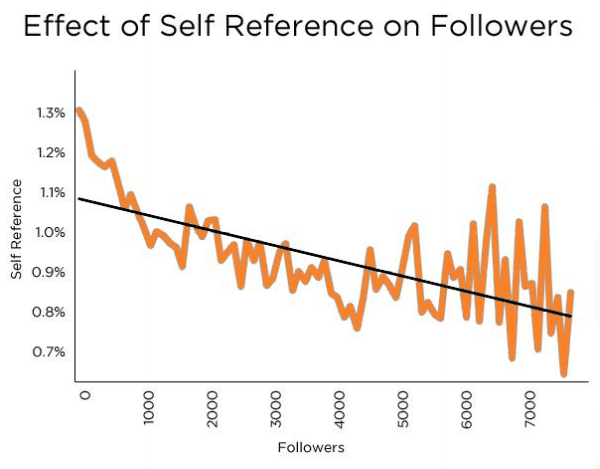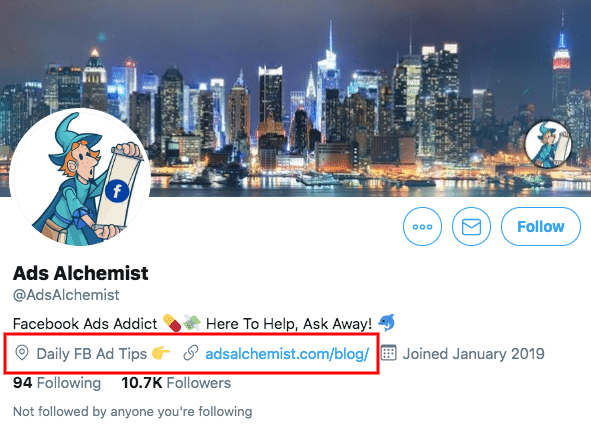Following other users is the most used, affordable, and effective way to get Twitter followers, fast. With this strategy to gain real and targeted followers, you have to keep an eye on your follow back ratio.
The follow-back ratio speaks about the attractiveness and healthiness of your account, and at the same time, it’s the success measure of your Twitter growth strategy.
Now, you might be wondering: how can I improve my follow back ratio? What is a good or bad follow-back ratio? What’s the industry average? We got your back.
Want to know the best part: we’ve conducted a deep analysis of the follow-back ratio of our customers to find the lowest, the average, and the highest ones.
Stay with me to learn everything you need to know about your Twitter follow back ratio and gain more Twitter followers than ever before.
Table of Contents
- What is Twitter Follow Back Ratio
- How to Measure Twitter Follow Back Ratio
- Major Factors that Impact Twitter Follow Back Ratio
- Why It’s Important to Have a High Twitter Follow Back Ratio
- Twitter Follow Back Ratio Average
What is Twitter Follow Back Ratio
When talking about growth strategies to gain more followers on Twitter, one of the most popular ways is following other accounts (by hand or using a auto follower) expecting they will follow back.
The core psychology behind this strategy is the reciprocity principle.
But, what is the reciprocity principle?
Here’s the deal:
“We pay back what we received from others.”
Follow back ratio is the industry-recognized method to measure your success while applying a Twitter auto-follow strategy.
Now that you know what is Twitter follow back ratio, start gaining followers!
Start 15 Day Free Trial
Our very own Twitter growth service that helps you gain real, targeted and organic Twitter followers on autopilot. Increase engagement. Meet the most affordable way to increase your twitter followers. Less than 1 minute to set up.
Start Your Free Trial→How to measure Twitter Follow Back Ratio
Follow back ratio is a simple calculation that lets you know how many of the accounts you have followed are actually following you back.

The higher this percentage, the better. Having a high follow-back ratio means that your account and content are attracting others and that’s always good.
Now, as with most of the social media metrics, you don’t want to just focus on the quantity. You have to apply a multi-dimensional analysis taking into account quantity and quality.
Here is the kicker: if you are having a high follow back ratio, but you are attracting the wrong audience, it will be worthless for your account (the same if you are buying Twitter followers).
Although your account could be gaining new followers day after day, if those followers don’t interact with your content they won’t be valuable to you.
So, you have to focus on gaining more followers, but targeted ones.
Major factors that impact Twitter Follow Back Ratio
Well, now you know what it is and how to calculate the Twitter follow-back ratio.
But, how can you positively impact that ratio and make it work for you?
We’ll separate the factors in two main categories:
- On-profile Factors -> Related to your profile account.
- Filtering Factors -> Related to your targeting criteria.
On-profile factors
All the things that potential followers see when loading your Twitter profile are factors that impact follow back ratio: profile picture, cover image, bio, URL, location…
Want to know how to tweak your profile to improve the follow-back ratio? Stay with me…
Profile Picture
This is the first impression you’ll give potential followers.
It takes 0.05 seconds for a person to decide if they will stay or leave a website and your Twitter account profile is not an exception.
If you are using Twitter for your personal brand, use a passport profile picture with a natural pose.
When working on your brand/product Twitter profile, use a rounded picture of the isotype of your logo.
Avoid adding claims and taglines on your profile picture, people won’t read it and will make your profile picture harder to recognize.
Remember that the ideal image size for your profile picture is 500 x 500 pixels.
One thing to keep in mind when analyzing Twitter follow-back ratio: personal accounts tend to have a higher follow-back ratio in comparison to company accounts.
That’s because people feel more attracted to pay back the follow to a real human being.
Cover Image
Your cover image and the visual composition with your profile picture and color scheme speak about you and makes an impact (positive or negative) on your potential followers.
The ideal image size for the cover image is 1500 x 500 pixels, that’s plenty of space to add more information about you/your business and why people should follow your account.

Bio
Writing an engaging bio should be a top priority when managing your account.
People don’t follow someone with some random stuff in their bio, copywriting matters!
Describe yourself, your credentials, and don’t be shy.
According to a study from Dan Zarella from Hubspot, using words that demonstrate authority in your bio correlates with more followers than average users:

Following/Followers Ratio
You have to keep your following number as little as possible while growing your audience.
When you follow someone, that person feels flattered for your follow and she will check how much love (follows) you’re sharing on Twitter with other accounts.
So, the flattered impact won’t be the same if you are following 300,000 or if you just follow a bunch of accounts without having a higher number of followers. The following number has an impact on your follow-back ratio.
Also, keeping your account with less following than followers is a healthy measure to be under Twitter radars.
Don’t take this recommendation to the limit (not following anyone), you have to follow accounts. Recently we’ve seen a wave of banned accounts by Twitter for not following other accounts.
So, keep balanced followers/following ratio (always under 1), avoid following more than 1,000 accounts, and always follow at least a couple of accounts.
Pinned Tweet
With your pinned tweet your potential followers will have a sneak peek of the topics of your tweets and also see the success of your best stuff.
According to a study by Christoph Trappe, people will be prone to follow you if you have a pinned tweet with tons of likes, retweets, and replies.
Pin a tweet that correlates with a topic that’s consistent with the content you normally share and also try to pin a winner-tweet with a high engagement rate.
Last Five Tweets
Sometimes your pinned tweet it is not enough to convince a potential follower to follow you and she will go to see your latest tweets to understand:
- How often you share content – bear in mind that according to this study the most common reason for unfollowing is a burst of updates.
- The topics of your tweets – it’s known that people desire to find like-minded others.
Curate your latest tweets and leave just those that represent your account and with high engagement.
URL
What you make reference to in your URL is important.
The website behind your profile can have an impact on your follow-back ratio.
If the website you are linking to is not updated or you are working on a new website, try to find some creative ways to use this field: other social media profiles, email marketing lists, etc.
Avoid redirecting your potential followers to an outdated site.

Localization
Lastly, but not least, where do you live/tweet has an impact since it affects how you are seen by others.
Do you remember that we mentioned that people desire to find like-minded others? This is more proof of that.
Filtering Factors
Now, we’ve covered all the aspects of how your Twitter profile looks to make it feel more appealing for new potential followers.
But, what about those potential followers? Are you following the right people?
As we mentioned above, if you are not following the right audience, they won’t feel attracted by your profile/content and at the end… they won’t follow you back!
You have to take care of the quality of your following strategy, how?
Filtering who you follow, the right way.
We’ll see the most important factors you can use to filter and find a real and targeted audience on Twitter.
You can do this manually or you can save many hours of your valuable time trusting this process to our follow bot.
Owlead has been enhancing in the past 4 years to make it dead simple to find the most attractive and targeted accounts that will probably follow you back.
Our AI algorithm works with several factors to segment a real, targeted, and active audience for you.
Here you have some of the factors you can use in your following strategy to filter your audience.
Filter Unwanted Accounts
These are some of the filters you have to take care of when following someone on Twitter and to build a high-quality audience:
- Profile picture/Cover image – avoid users with default profile pictures or without a cover image.
- Follower count – set a minimum of followers that an account has to have to be attractive enough for you.
- Tweet Frequency – you want active accounts that are tweeting periodically.
- Negative words on bio – you don’t want people that follow you back just for the sake of the following. So, avoid following accounts with “Follow By Follow“, “Follow Back” and phrases like that in the bio.
Find Your Target Audience
With the above filters, you’ll evade unwanted accounts, but you still need to find targeted accounts.
The most important field of a Twitter profile is the Twitter bio. Most accounts use tags/terms to describe themselves there.
Use the Twitter bio to your advantage and filter by terms that you are interested in. eg: CEO, Marketing, Maker…
Also, another important key factor that will impact the follow-back ratio is who is following the accounts that you would follow.
Point to those accounts that are already following your competitors.
They will be educated in your product/service and feel more attracted to follow you back.
As you may notice, the filtering factors add difficulty to the following strategy and will push you to assign valuable time to perform it.
That’s where our Twitter automation comes in handy. Owlead is a Twitter growth service that has these filtering factors built-in to attract a real and targeted audience on Twitter on autopilot.
Use our free 10-day trial period and get the most out of our Twitter marketing tool.
Don't follow the wrong accounts. Let Owlead helps you target your audience
Start 15 Day Free Trial
Our very own Twitter growth service that helps you gain real, targeted and organic Twitter followers on autopilot. Increase engagement. Meet the most affordable way to increase your twitter followers. Less than 1 minute to set up.
Start Your Free Trial→Why having a high follow back ratio is important
Now, you are here to improve the follow-back ratio and get more followers on Twitter.
That means that as long as your follow-back ratio is higher, you’ll be attracting more followers.
BUT, remember that a high follow-back ratio doesn’t mean a higher quality of your audience.
What’s the bottom line? You have to work together quantity and quality to attract a real and targeted audience on Twitter.
Twitter Follow Back Ratio Average
We know you want to compare your follow-back ratio with the rest of the universe, but at this point in this post, we didn’t mention anything about industry averages.
Fact: we couldn’t find a decent scientific-oriented study about Twitter follow back ratio, but we will present to you the averages of our customers so you can have a sense if you are on the right track or not.
We’ll cut to the chase, here you have the data based on a study of the follow back ratio of our customers:
Highest Follow Back Ratio: 37.95%
Average Follow Back Ratio: 13.72%
Lowest Follow Back Ratio: 2.17%
As you can see there is plenty of room between the lowest and the highest and that’s because the factors that determine the follow back ratio (described above) are several.
Want some quick advice based on this data and our experience?
Follow Back Ratio < 5%
Re-think everything: from your profile picture to your tweets and also your filtering criteria.
But, mostly focus on On-profile factors to make your account look valuable to follow.
Compare your Twitter account with leaders of your industry, inspire yourself with their approach.
5% < Follow Back Ratio < 10%
You are still under the average.
Focus on your Filtering Factors until you reach at least the average.
10% < Follow Back Ratio < 20%
You are in a good place now, the improvements you can make from now on in your follow back ratio will start to be marginal.
Start to focus on your content and keep testing different audiences when following: followers from different competitors, different keywords in bio, localization.
Follow Back Ratio > 20%
Well, you are in the top tier! Well done!
Now the improvements to your follow back ratio will definitely be marginal.
After you reach this point, is it better to put your entire effort into crafting some fuck*ng good content!
Your growth hacking strategy is working like a charm!





